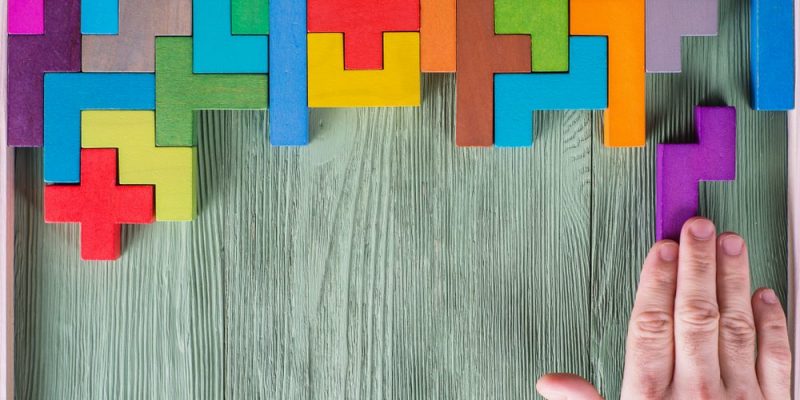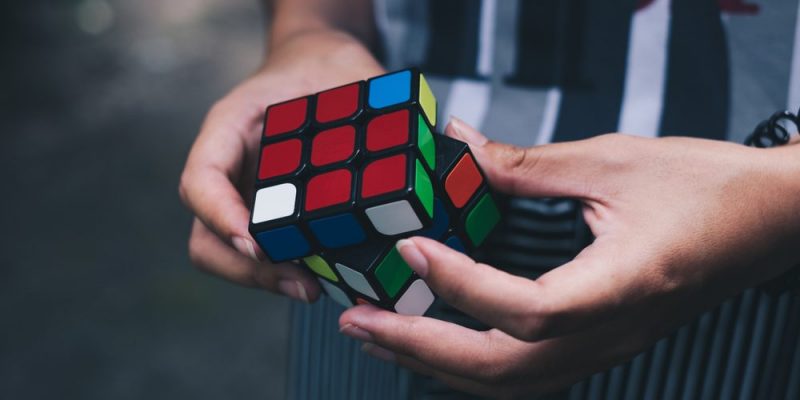We explain what logical thinking is and what it is for. Also, logical-mathematical thinking and some examples.

What is logical thinking?
logical thinking is a form of reasoning that establishes a series of relationships between objects (real or abstract) to reach a generalization. It comes from individual elaboration and uses coherence and sequentiality to analyze information and solve problems.
This type of reasoning involves extracting conclusions valid from a set of premises. The ancient Greek philosophers extensively cultivated this thought, since they saw deduction and formal correlation as the best method to reach the truth.
Nowadays, the logic It is an elementary part of scientific thinking. Above all, regarding the rules of the formal research process, which requires performing operations such as generalization and classification.
Furthermore, logical thinking It is a fundamental tool for solving problems in everyday life because it allows people to analyze, argue, test hypotheses and justify their arguments.
What is logical thinking for?

Logical thinking is a valuable tool that can be applied in different areas. Some of its main functions are:
- Argumentation It contributes to the communication and expression of arguments and ideas in a structured and coherent way.
- Deduction It allows general conclusions to be reached from specific cases. It is necessary to analyze and interpret data, for example, statistics.
- Problem solving. It makes it possible to divide a problem into smaller, more manageable parts, to facilitate its analysis.
- Decision making. It contributes to the process of choosing between different options, considering the alternatives rationally and taking into account the possible consequences of each one.
- Organization and development of strategies. It allows you to develop efficient plans to achieve an objective, by identifying available resources, establishing priorities and managing time.
Logical-mathematical thinking
Logical-mathematical thinking is the application of logical principles to mathematical reasoning. It represents the ability to use numbers, reason and solve problems using logical patterns. It is a skill that is developed from childhood, from direct situations, such as observing images, comparing elements or classifying objects.
According to the psychologist Jean Piaget (1896-1980), logical-mathematical knowledge becomes more complex during children's development. It is built from concrete thinking, which is experimentation with tangible and manipulable objects, that is, reflection on a real action. Then, children begin to operate with hypotheses and ideas, and to develop theories, which is what characterizes formal operations: they represent a possible action.
Logical-mathematical thinking allows us to examine situations, recognize patterns, raise hypotheses and seek solutions to problems that involve numerical, algebraic, geometric or probabilistic operations.
Examples of logical thinking

Some examples of logical thinking are:
- Rubik's cube. It is a popular toy from the late 20th century, which consists of a six-sided cube made up of nine colored squares, capable of moving vertically or horizontally. The cube is usually disordered and then attempted to be recomposed, which requires working sequentially and applying specific algorithms for each stage.
- Puzzles or puzzles. Putting together puzzles involves considering shapes, colors and patterns to place the pieces in the proper order.
- The riddles. Solving puzzles requires performing a structured analysis of the clues and identifying the relationships between them to deduce the solution.
- The j category games. They are games in which objects must be ordered or grouped into categories. This involves establishing logical relationships between them and considering their specific properties and common characteristics. For example, the “tutti frutti” or “stop”.
- The mathematics Every mathematical exercise puts formal-logical thinking into practice. For example, when applying formulas, using algorithms to solve addition and subtraction problems, solving number patterns, or deducing the solution to logic problems.
- Strategy games. These types of games involve thinking about actions in advance and taking into account the opponent's possible moves, as in chess.
- Planning a tour. It requires calculating how long it takes to get from one place to another, and considering variables such as traffic or transportation delays.
- The organization. When organizing a space, such as a shelf, it is necessary to think about the available space and the number of elements to accommodate, and analyze what is the best way to manage the space.
document.addEventListener(“DOMContentLoaded”, (e) => {
var sliderContainer, slider;
sliderContainer = document.getElementById(‘block_65408c0683479adf794d09dfd19038da’);
if (typeof initSlider !== ‘function’) {
console.log(‘Swiper haven\’t been loaded’);
sliderContainer.className += ‘ fw scroll-snap’;
return;
};
options = {
direction: ‘horizontal’,
speed: 1000,
slidesPerView: ‘auto’,
// slidesPerGroup: 1,
centerInsufficientSlides: true,
// centeredSlides:true,
spaceBetween: 15,
breakpoints: {
720: {
// centeredSlides: false,
// slidesPerGroup: 2,
spaceBetween: 25
},
},
pagination: {
el: ‘.swiper-pagination’,
type: ‘bullets’,
clickable: true
},
}
slider = initSlider(sliderContainer, options);
})
References
- Jaramillo Naranjo, LM and Puga Peña, LA (2016). Abstract-logical thinking as a support to enhance cognitive processes in education. Sophia. Philosophy of Education Collection, 21(2), 31-55. https://sophia.ups.edu.ec
- Medina Hidalgo, MI (2018). Methodological strategies for the development of logical-mathematical thinking. Didactics and Education,9(1), 125-132. https://revistas.ult.edu.cu





